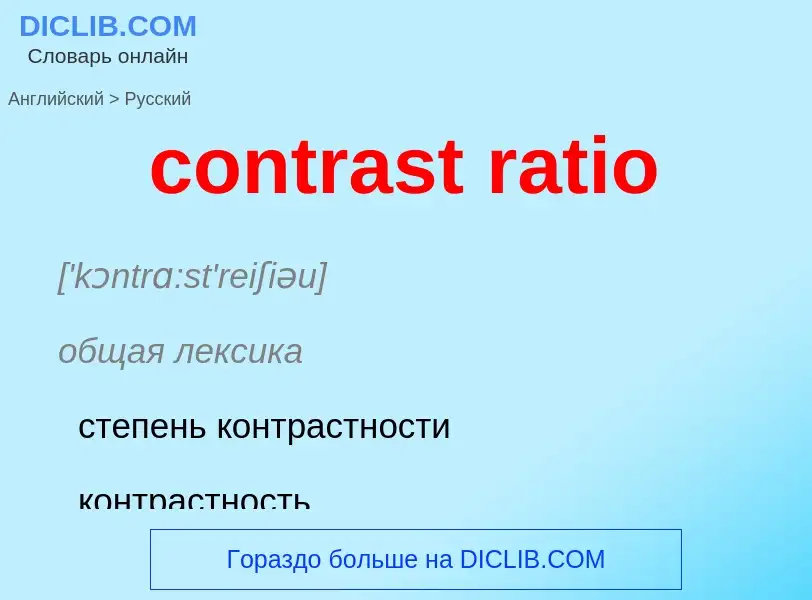Перевод и анализ слов искусственным интеллектом ChatGPT
На этой странице Вы можете получить подробный анализ слова или словосочетания, произведенный с помощью лучшей на сегодняшний день технологии искусственного интеллекта:
- как употребляется слово
- частота употребления
- используется оно чаще в устной или письменной речи
- варианты перевода слова
- примеры употребления (несколько фраз с переводом)
- этимология
contrast ratio - перевод на русский
['kɔntrɑ:st'reiʃiəu]
общая лексика
степень контрастности
контрастность
физика
коэффициент контрастности
медицина
контрастное вещество
общая лексика
контрастное вещество
медицина
контрастирование
медицина
контрастное вещество
медицина
контрастное вещество
математика
двоеточие
знак деления
знак отношения
Определение
Википедия
The contrast ratio (CR) is a property of a display system, defined as the ratio of the luminance of the brightest shade (white) to that of the darkest shade (black) that the system is capable of producing. A high contrast ratio is a desired aspect of any display. It has similarities with dynamic range.
There is no official, standardized way to measure contrast ratio for a system or its parts, nor is there a standard for defining "Contrast Ratio" that is accepted by any standards organization so ratings provided by different manufacturers of display devices are not necessarily comparable to each other due to differences in method of measurement, operation, and unstated variables. Manufacturers have traditionally favored measurement methods that isolate the device from the system, whereas other designers have more often taken the effect of the room into account. An ideal room would absorb all the light reflecting from a projection screen or emitted by a cathode ray tube, and the only light seen in the room would come from the display device. With such a room, the contrast ratio of the image would be the same as the contrast ratio of the device. Real rooms reflect some of the light back to the displayed image, lowering the contrast ratio seen in the image.
Static contrast ratio is the luminosity ratio comparing the brightest and darkest shade the system is capable of producing simultaneously at any instant of time, while dynamic contrast ratio is the luminosity ratio comparing the brightest and darkest shade the system is capable of producing over time (while the picture is moving). Moving from a system that displays a static motionless image to a system that displays a dynamic, changing picture slightly complicates the definition of the contrast ratio, due to the need to take into account the extra temporal dimension to the measuring process.


